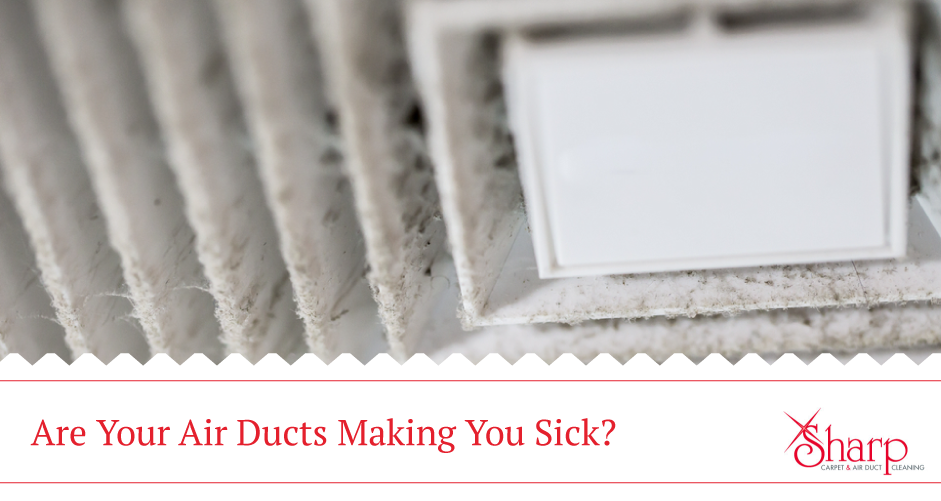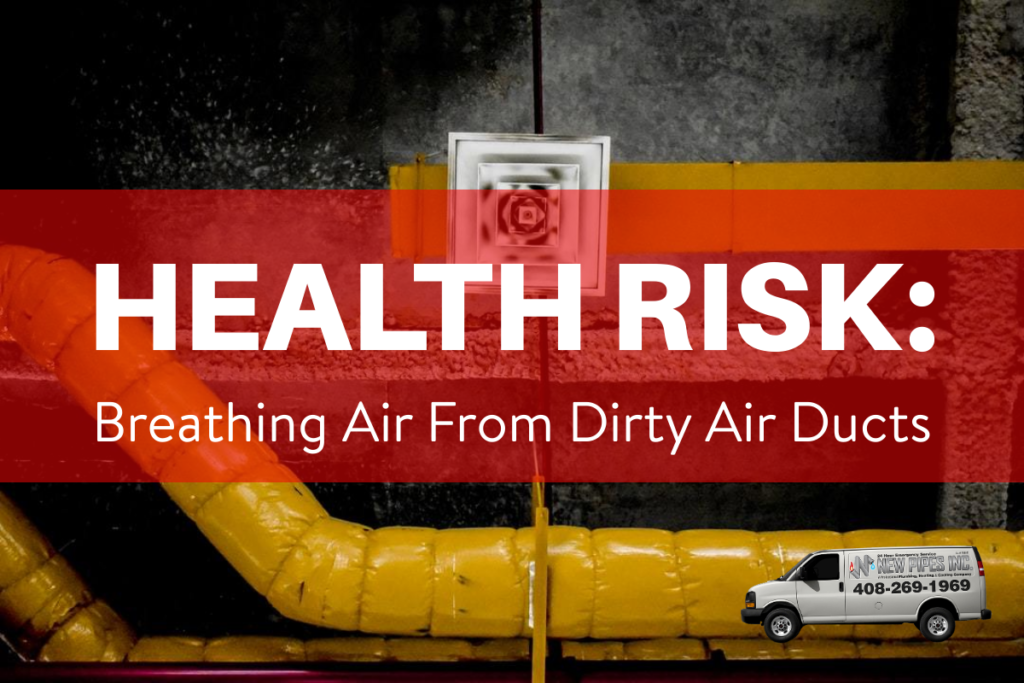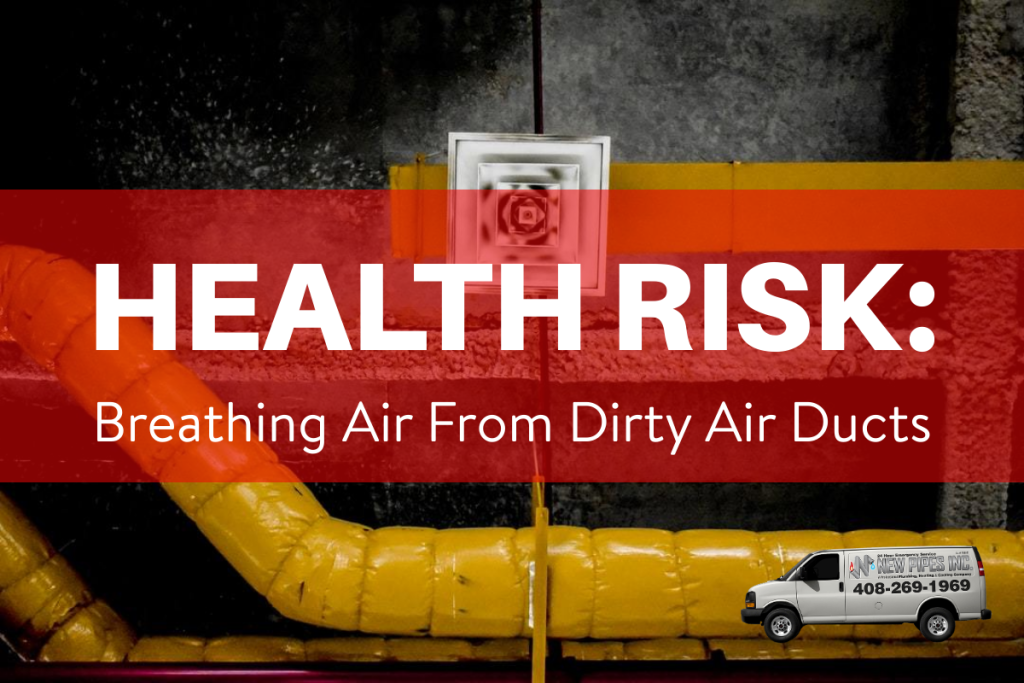Dirty ducts can indeed pose health risks. Occupants in homes with dirty air ducts may experience symptoms similar to allergies, such as coughing, sneezing, and a runny nose.
Mold, dust, and other contaminants can also cause a sore throat, headaches, and dizziness. Cleaning air ducts is essential to ensure a healthy indoor environment and prevent the spread of harmful particles. Neglecting duct cleaning can lead to the spread of dirt and allergens in your home, which may trigger allergic reactions and respiratory problems for people with asthma.
Poor indoor air quality can even contribute to the spread of bacteria, infections, and lung diseases, according to the American Lung Association.
The Impact Of Dirty Ducts On Health
Dirty ducts can have a negative impact on your health. Symptoms such as coughing, sneezing, and runny nose may occur due to mold, dust, and other contaminants in the air ducts. In addition, sore throat, headaches, and dizziness could also be caused by the lurking pollutants in your ductwork.
| The Impact of Dirty Ducts on Health |
| Symptoms and Allergic Reactions |
| Dirty air ducts in homes can lead to symptoms similar to allergies, including coughing, sneezing, and a runny nose. The presence of mold, dust, and other contaminants in the ducts can also cause sore throat, headaches, and dizziness. Mold spores in the air vents can further cause coughing, sneezing, nasal blockage, itchy eyes, skin irritation, breathing difficulties, stuffy nose, runny nose, headaches, and other allergy-like symptoms. |
| Potential Respiratory Infections |
| Dirty ductwork can contain harmful particles that may lead to respiratory infections. These infections can range from mild respiratory irritation to more severe conditions such as bronchitis and pneumonia. It is important to ensure clean ducts to reduce the risk of respiratory infections. |
| Skin Problems and Irritations |
| Dirty ducts can also contribute to skin issues such as allergic dermatitis, rashes, hives, skin irritation, and itching. These symptoms can occur due to the presence of irritants and allergens in the air circulating through the ducts. |
Epa Recommendations For Air Duct Cleaning
Dirty air ducts can pose health risks to occupants of a home. Mold, dust, and contaminants that accumulate in ducts can cause symptoms similar to allergies, such as coughing, sneezing, and a runny nose. In addition, these pollutants can also lead to sore throat, headaches, and dizziness. While the Environmental Protection Agency (EPA) does not recommend routine air duct cleaning, it does suggest inspecting and maintaining fuel-burning appliances, such as furnaces, stoves, and fireplaces, to prevent carbon monoxide poisoning. Mold in air ducts can also have negative effects, including coughing, sneezing, nasal congestion, itching eyes, and skin irritation. Additionally, duct cleaning should be done carefully to avoid spreading dirt and pollutants throughout the home, which can trigger allergic reactions and respiratory issues, particularly for individuals with asthma.
Overall, it is important to ensure that air ducts are clean and well-maintained to promote a healthy indoor environment and mitigate potential health risks associated with dirty ducts.
Mold In Air Ducts And Its Health Effects
Dirty air ducts can pose a health risk to occupants. Mold spores that accumulate in the air ducts can cause various health problems. One common symptom of mold in air ducts is a musty smell. Additionally, mold spores can cause symptoms similar to allergies, including coughing, sneezing, and a runny nose. Other symptoms that may be experienced include a sore throat, headaches, and dizziness. It is important to address mold in air ducts to prevent these health issues.
To get rid of mold in air ducts, it is recommended to hire a professional duct cleaning service. They will thoroughly clean and sanitize the air ducts, removing any mold and contaminants. Regular maintenance of air ducts is also important to prevent a buildup of mold and other harmful substances. By keeping the air ducts clean, occupants can enjoy better air quality and reduce the risk of health problems.
The Dangers Of Duct Cleaning
|
In homes with dirty air ducts, occupants may experience symptoms that are similar to the symptoms of allergies, including coughing, sneezing, and runny nose. Mold, dust and other contaminants lurking in your ducts could also cause sore throat, headaches and even dizziness. EPA does not recommend that the air ducts be cleaned routinely, but only as needed. EPA does, however, recommend that if you have a fuel burning furnace, stove or fireplace, they be inspected for proper functioning and serviced before each heating season to protect against carbon monoxide poisoning. Duct cleaning may pose a danger to you and your family if the dirt is left to spread into your home. The air pollutants may cause allergic reactions like running nose, sneezing, and wheezing for people battling asthma. Numerous particles that lurk within your ductwork can trigger irritating skin issues, like allergic dermatitis, rashes, hives, skin irritation, and itching. |
Indoor Air Quality And Long-term Health
In homes with dirty air ducts, occupants may experience symptoms that are similar to the symptoms of allergies, including coughing, sneezing, and runny nose. Mold, dust, and other contaminants lurking in your ducts could also cause sore throat, headaches, and even dizziness. Additionally, mold spores can cause health problems such as coughing, sneezing, nasal blockage, itchy eyes, skin irritation, breathing difficulties, and other allergy-like symptoms. Furthermore, duct cleaning may pose a danger to you and your family if the dirt is left to spread into your home. The air pollutants may cause allergic reactions like a running nose, sneezing, and wheezing, especially for people battling asthma. Moreover, numerous particles that lurk within your ductwork can trigger irritating skin issues, like allergic dermatitis, rashes, hives, skin irritation, and itching.

Credit: www.sharpcarpetcleaningomaha.com
Professional Air Duct Cleaning Services
Dirty air ducts can pose potential health risks for occupants. Mold, dust, and other contaminants that accumulate in dirty ducts can cause symptoms similar to allergies, including coughing, sneezing, and a runny nose. In addition, these contaminants can also lead to a sore throat, headaches, and even dizziness. It is important to note that the Environmental Protection Agency (EPA) does not recommend routine air duct cleaning but rather cleaning as needed. However, if you have a fuel-burning furnace, stove, or fireplace, the EPA does recommend inspecting and servicing them before each heating season to prevent carbon monoxide poisoning.
Finding trustworthy professional air duct cleaning services is crucial to effectively and safely remove the accumulated contaminants. Regular cleaning frequency and maintenance as well as the benefits of professional cleaning should be considered when choosing a service provider. It is also important to ensure that the cleaning process aligns with industry standards to avoid any potential negative side effects like allergenic skin issues or exacerbating respiratory conditions.
Preventing Dirty Ducts And Promoting Health
Dirty air ducts can pose health risks and impact indoor air quality. Homes with dirty ducts may experience symptoms similar to allergies, including coughing, sneezing, and a runny nose. Mold, dust, and other contaminants in the ducts could also cause a sore throat, headaches, and dizziness.
It is important to prioritize regular HVAC maintenance to prevent dirty ducts and promote health. This includes cleaning and filtering techniques to remove dirt, dust, and other pollutants from the air. Regular cleaning and maintenance can improve overall indoor air quality, ensuring a healthier living environment.
While the Environmental Protection Agency (EPA) does not recommend routine air duct cleaning, they do suggest inspecting fuel burning furnaces, stoves, and fireplaces before each heating season to protect against carbon monoxide poisoning. Mold in air ducts can also lead to health problems such as coughing, sneezing, nasal blockage, itchy eyes, and skin irritation.
In conclusion, preventing dirty ducts through regular maintenance and cleaning techniques is crucial in promoting overall indoor air quality and minimizing health risks associated with contaminated air.

Credit: www.newpipesinc.com

Credit: www.tntcleaningcompany.com
Frequently Asked Questions On Are There Health Risks Associated With Dirty Ducts?
Can Dirty Ductwork Make You Sick?
Dirty ductwork can make you sick. Symptoms may include coughing, sneezing, runny nose, sore throat, headaches, and dizziness. Mold, dust, and other contaminants in the ducts can cause these health issues.
Is It Ok To Never Clean Air Ducts?
Dirty air ducts can lead to health issues such as allergies, coughing, sneezing, runny nose, sore throat, headaches, and dizziness. While the EPA doesn’t recommend routine cleaning, it’s important to inspect and service fuel-burning appliances to prevent carbon monoxide poisoning.
Mold in air ducts can also cause respiratory problems and allergy-like symptoms. Regular cleaning can prevent these health risks.
Can Mold In Your Air Ducts Make You Sick?
Yes, mold in your air ducts can make you sick. It can cause allergies, coughing, sneezing, runny nose, sore throat, headaches, and dizziness. Mold spores can also lead to respiratory problems and skin irritation.
What Are The Side Effects Of Duct Cleaning?
Duct cleaning may cause allergic reactions such as sneezing, running nose, and wheezing. It can also lead to skin issues like allergic dermatitis, rashes, hives, and itching. The spread of dirt in your home can pose a danger to your family’s health.
Can Dirty Ductwork Make You Sick?
In homes with dirty air ducts, occupants may experience symptoms that are similar to allergies, including coughing, sneezing, and runny nose. Mold, dust, and contaminants in your ducts could also cause sore throat, headaches, and even dizziness.
Conclusion
Dirty ducts can pose significant health risks to occupants. Mold, dust, and other contaminants in the air ducts can cause symptoms similar to allergies, including coughing, sneezing, and a runny nose. Moreover, they can also lead to sore throats, headaches, and dizziness.
Therefore, it is important to prioritize regular duct cleaning to ensure clean and healthy indoor air quality. Neglecting to clean the air ducts can result in the spread of pollutants and potential allergic reactions or respiratory issues. Protecting the health of your home and family begins with clean air ducts.

